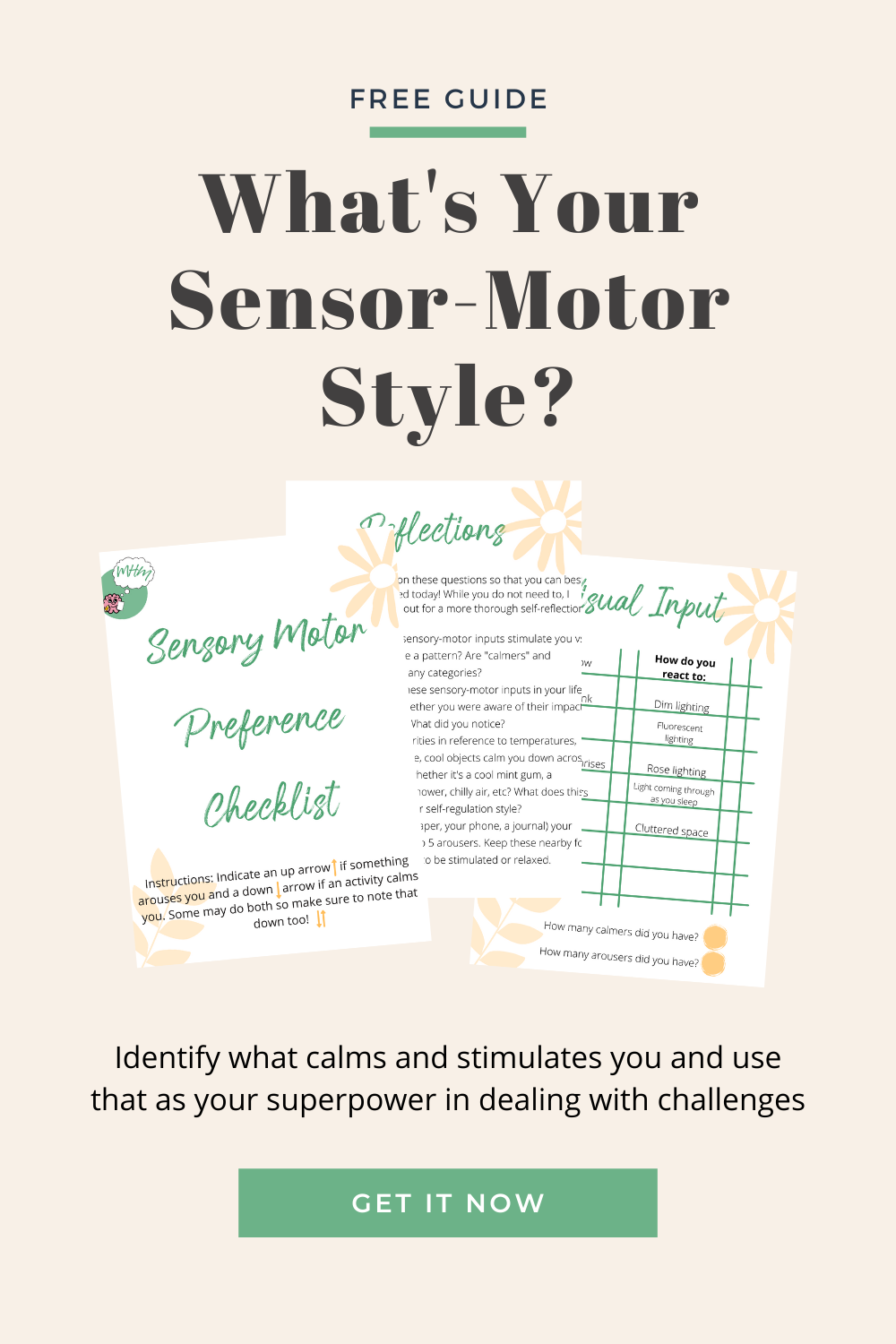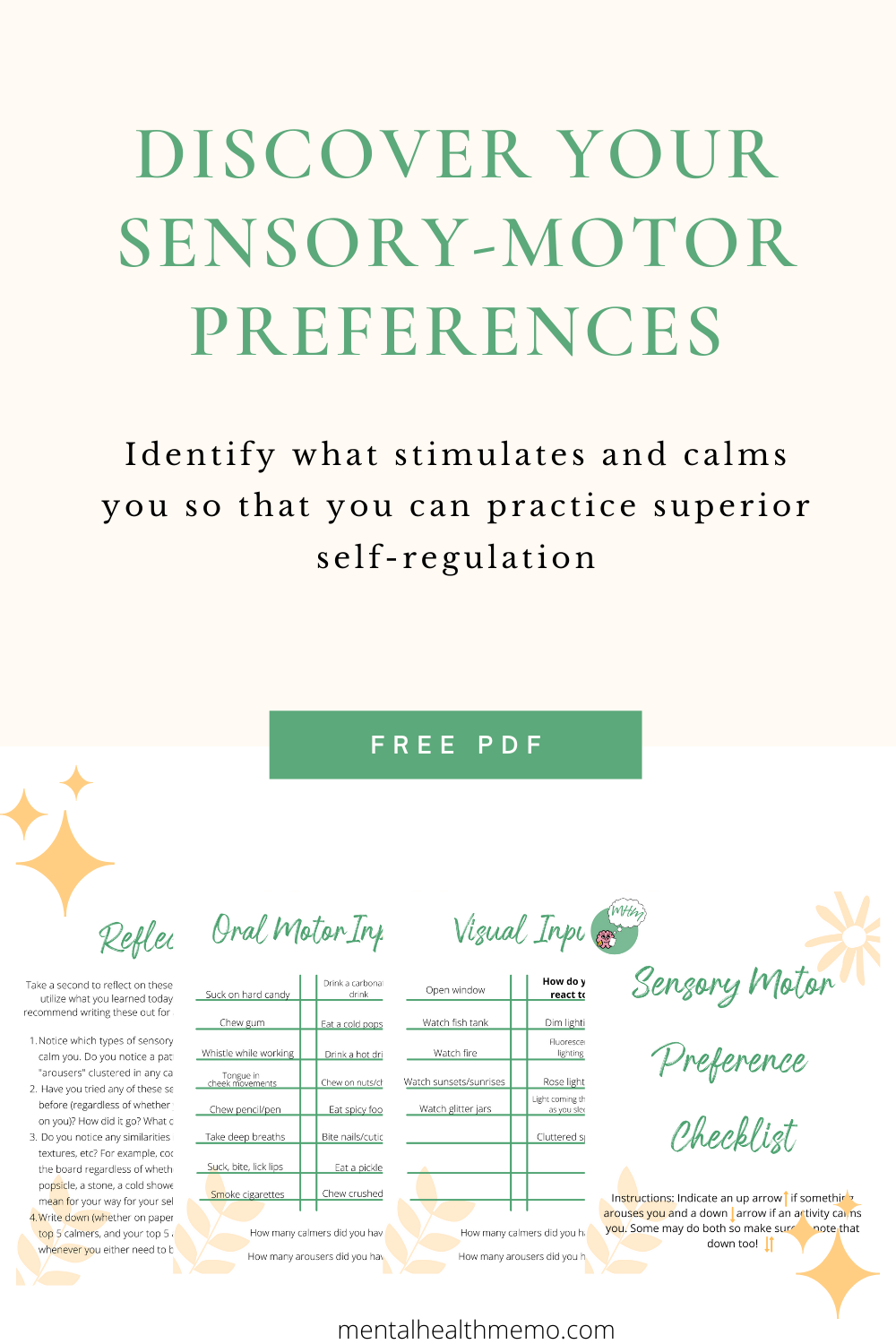Precursor
The mental health memo for today is: controlling our emotions seems like something we all should be able to do as adults, but it’s a lot harder than it looks! This is where understanding how to practice self-regulation is essential.
A lot of times we can feel unable to calm down or energize ourselves as needed, and it may feel like things are spiraling out of control.
But we absolutely can regain that sense of control by utilizing our self-regulation preferences.
I want to note that a lot of the information I share here has been taught to me through my placement opportunity working with children exposed to trauma, as well as literature on child development.
It also heavily influenced by Making Sense of Trauma and their free webinar which I highly suggest you take if you have kids or work them (or if you’re just interested).
However, I have altered things around slightly to make it applicable to grown-ups too, as we still utilize self-regulation even in adulthood.

What is Self-Regulation?
In simpler words, self-regulation is our ability to turn the gas up on our feelings, as well as put the break on them so that we can function optimally in society.
Often when we’re discussing self-regulation it’s in relation to children and their development.
Children need to learn how to self-regulate effectively and safely so that they can grow up to have strong coping mechanisms as adults.
If they don’t develop these skills, they grow to be adults that cannot control their emotions, maintain healthy relationships, or function healthily.
And this is how I first got exposed to self-regulation myself. I was working at an organization that supported women and children impacted by Intimate Partner Violence (or to use mainstream lingo: domestic violence).
There, I learned about how self-regulation is incredibly important for children’s development and I witnessed what happens when it gets disrupted and not taught due to trauma.
However, I also learned that self-regulation applies to adults too. Oftentimes, what we did as kids bleeds into our adulthood. And once we figure out what we do to self-regulate, we can tap into its full potential for our wellbeing. This is our next point!
How to Practice Self-Regulation
There are sensory-motor actions that many of us take to either calm our systems or hype them up. We can practice self-regulation by identifying which ones calm or arouse our system.
Wait; sensory-motor WHO?!
Great question!
Motor skills include things like:
- Muscle tone, strength & coordination
- Rhythm & timing
- Bilateral coordination
- And a LOT more that has to do with our movement (motor)!
Sensory skills include things like:
- Smell
- Touch
- Vestibular
- And lots more related to sensation (sensory)!
For the purposes of self-regulation, we’re going to be going over 5 sensory-motor categories that contain actions that either arouse or calm us:
- Oral Motor Input (Putting things in your mouth- no, not THOSE things. This is a PG blog)
- Vestibular & Proprioceptive Input (Move)
- Tactile Input (Touch)
- Visual Input (Look)
- Auditory Input (Listen)
The key is to figure out which ones arouse and calm you so that you can use that information to your benefit (more on this later 😉 )
To help you figure this out, I’ve created a PDF that helps you identify your motor-sensory preferences.
This PDF is highly influenced and adapted from the “Making Sense of Trauma Webinar Sensory-Motor Preference Checklist”, which was adapted from “Take Five: Staying Alert at Home and School, Therapy Works, Inc., www.alertprogram.com, 2001.”
All you need to do is identify whether the activity listed calms you or arouses you, and then reflect on the questions provided.
I’ve also included some ideas and inspiration on ways to utilize the sensory-motor skills that arouse and calm you the most!
Get it below!
How Knowing Your Self- Regulation Style Improves Your Life
Now that you understand what arouses you and what calms you, you can utilize this information in your day-to-day life. There are a lot of ways you can do this!
1. Note down your top 3 arousers and top 3 calmers and use them when necessary
Are you having an energy slump and can’t concentrate? Use the sensory-motor activity that most arouses you to help yourself refocus.
Experiencing a lot of anxiety? Try using one of the sensory-motor activities that calm you to alleviate that stress.
I’ll use myself as an example! A lot of my calming sensory-motor actions that calm me tend to be in the “Oral Motor Input” category (PG. BLOG. Y’ALL!).
This explained a lot for me because when I had panic attacks I used to suck on lollipops and for some reason it really helped. So now, I always keep some gum, candy, mint, or lollies on me so that if I start feeling anxious I can utilize them.
Alternatively, I found listening to rock (my favorite genre) really wakes me up. So when I start dozing off, I put on some rock gems and dance it out for a bit. This allows me to return to my task re-energized.
2. Understanding your own self-regulation style allows you to cultivate stronger relationships
Have you ever snapped at a loved one or done things you can’t really justify or explain? Or maybe you’ve been asked “how can I help you feel better?” and you don’t know how to respond?
By understanding our sensory-motor preferences, we are able to give people information about how to better support us.
Personally, I have always been THE WORST at responding to “how can I support you?”. I was CLUELESS. How CAN you support me? Who knows!
And while I’m still not the best at it, I have gotten better at realizing and addressing my emotional regulation needs by figuring out what calms and arouses me.
So now when I’m panicking and someone asks what they can do, I often say get me something to chew or fidget with, and don’t touch me because it overstimulates me.
So much better than “I don’t know *chaotic screeching*”.
3. Understanding ourselves helps us to better support others
To piggy-back off the previous point, understanding our own self-regulation creates better relationships. And this is not just for how we communicate to others our own needs, but the other way around too!
If you’re aware of the different types of sensor-motor practices, you might start to notice them within your loved ones too! Perhaps you can point it out to them so that they can identify these traits within themselves and use them.
For example, you could note “I’ve observed that you always feel better after listening to some music after you’ve had a hard day at work. Are there other times throughout the day you could try enjoying some music to help prevent you from burning out?”
This way we support our loved ones in realizing that they too can find and utilize their sensor-motor preferences to practice self-regulation.

In Summary
Learning to understand our self-regulation style can make a world of a difference in how we navigate through the world.
Remember that it’s important to note your calmers and arousers down so you always have them on hand when needed!
I hope this post has been helpful, and let me know in the comments what you discovered about your self-regulation style!
All my love,
T


Such a great insight into self-regulation. Emotion regulation (which is similar/related) is what I teach a lot of my counselling clients, and you really do need it to function through the stress of life. Thanks for sharing!
Thanks so much, Emily! You’re absolutely right that we need emotional regulation/self-regulation to get through the stresses in life. Otherwise, we can get really overwhelmed really quickly. I appreciate your insights!! 🙂